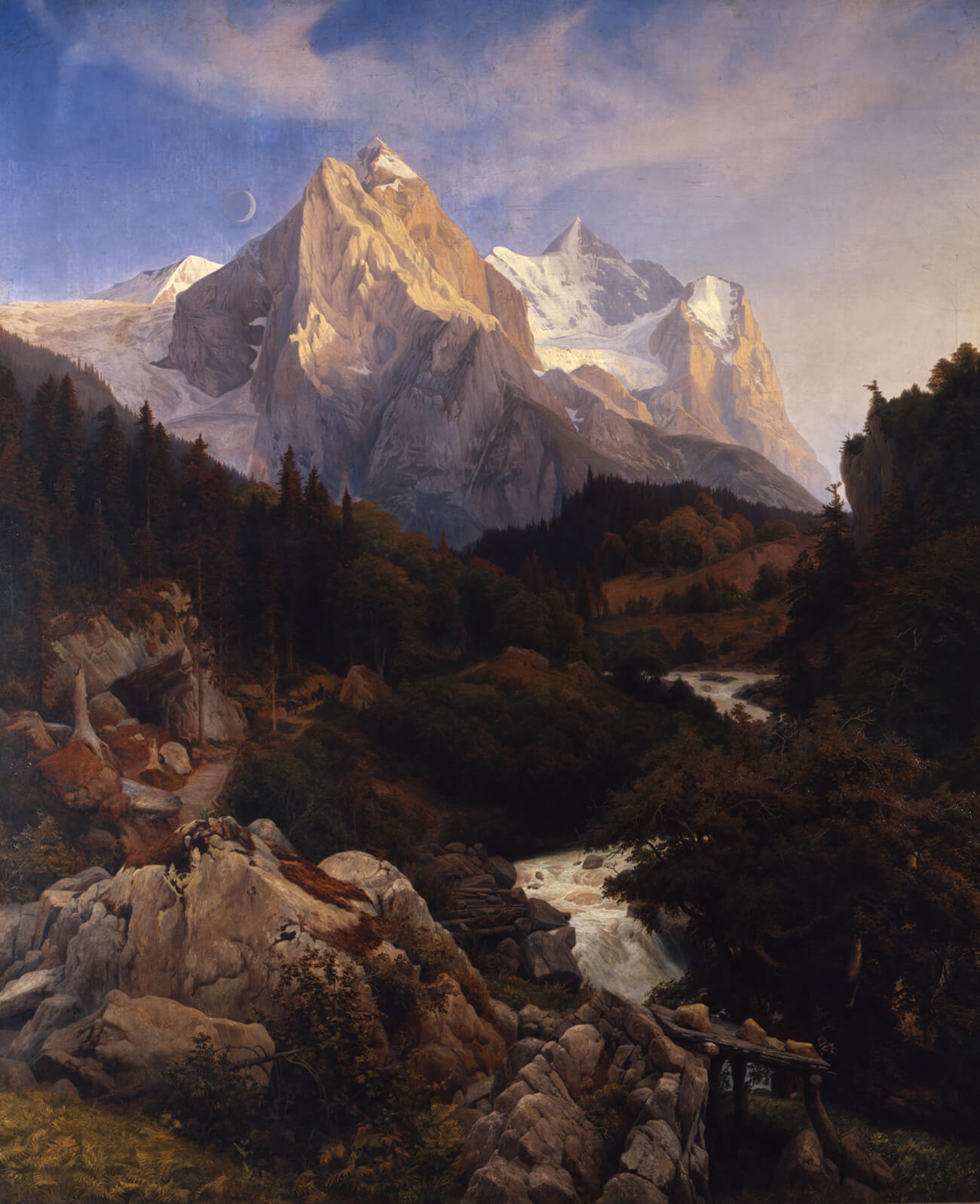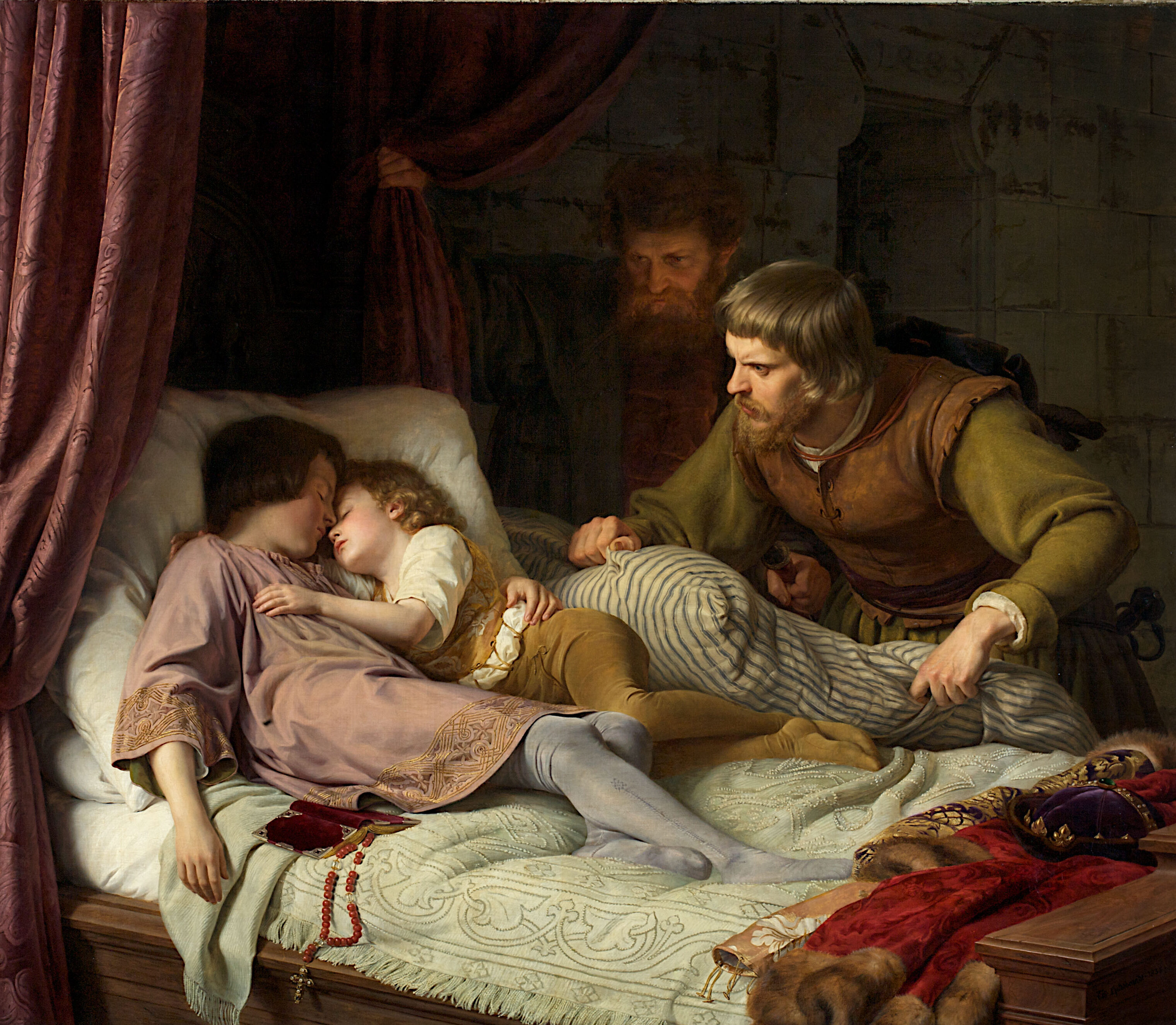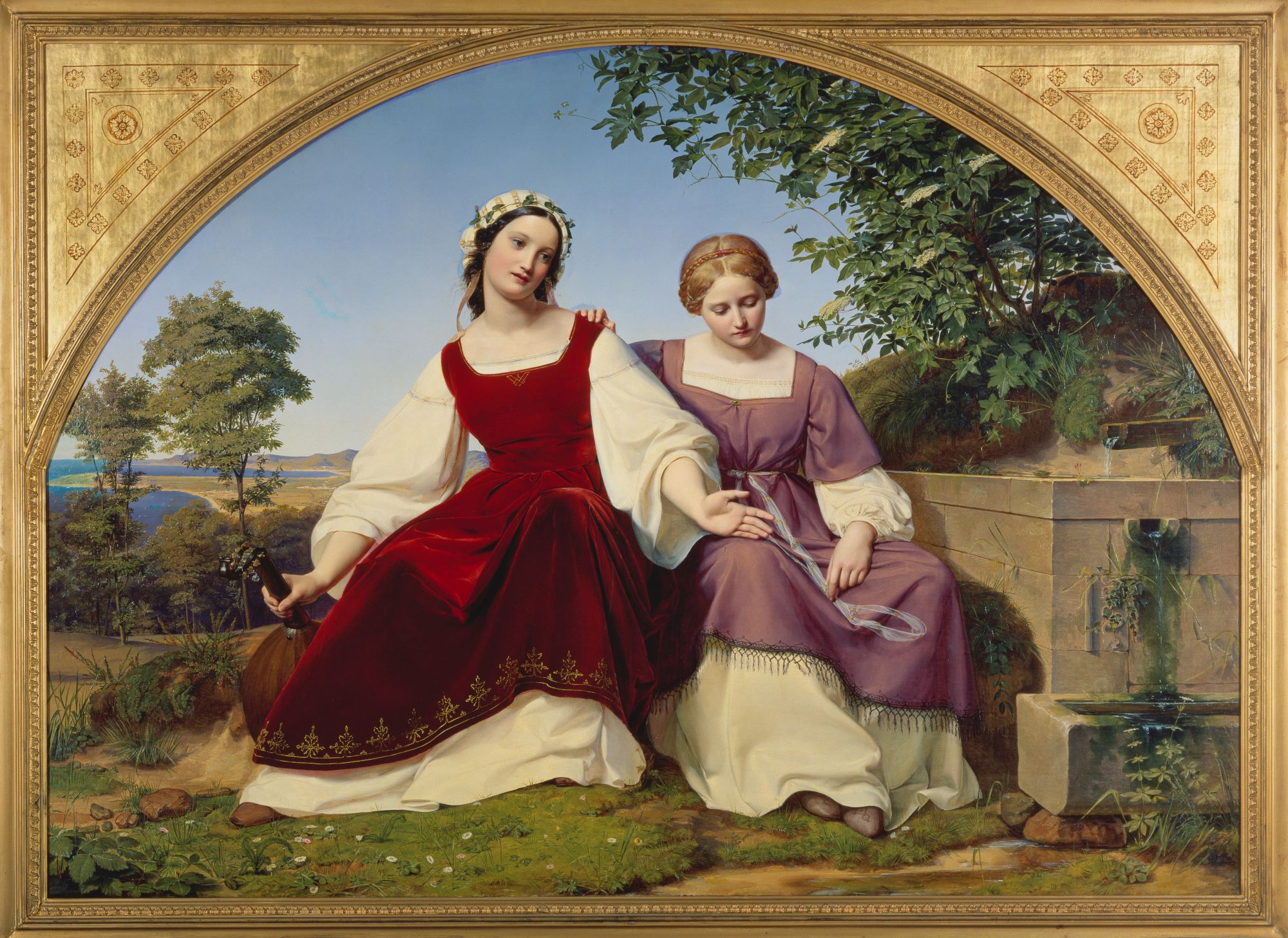The Düsseldorf School of Painting
The Düsseldorf School of Painting encompasses more than 4,000 artists who worked at the Academy of Art in Düsseldorf or in its environment in the period between 1819 to 1918, from the re-constitution of the Royal-Prussian Academy of Art in Düsseldorf until the end of the Prussian rule in the Rhineland.
Under its director Wilhelm von Schadow, who headed the Academy from 1826 to 1859, it developed to become the leading German institution for training artists, and the term Düsseldorf School of Painting soon became well known beyond the region. Early on, Peter von Cornelius and his successor Wilhelm von Schadow conceived a set of regulations for training at the Academy, which remained in place almost unaltered until into the 20th century, forming the basis for the lasting success of the Düsseldorf School of Painting.

Genres
Initially, the focus of the Düsseldorf School of Painting was on history painting, including portraits, and later on landscape and genre painting. Within the hierarchy of genres, it was history painting, with its religious, mythological, historical and literary themes, that ranked first. The tendency towards artists specialising in single fields was regarded critically by Schadow, who, nevertheless, was unable to halt this development. In 1828 Johann Wilhelm Preyer painted the first independent still lifes and thus laid the foundation for the discipline of still life painting. In 1827 Carl Friedrich Lessing and Johann Wilhelm Schirmer founded the society of landscape painting “Landschaftlicher Componirverein”, and two years later, Schirmer established the first landscape painting class at the Düsseldorf Academy of Art. Landscape painting subsequently developed to become the most successful genre within the Düsseldorf School of Painting. In genre painting, Carl Friedrich Lessing was one of the pioneers. Being successors of Eduard Pistorius, Lessing and Theodor Hildebrand created works, from the early 1830s onwards, that, rather than depicting scenes of historical significance, showed everyday situations. Despite the great popularity of these paintings, it was not until 1874 that a class for genre painting was established.

Internationality
Even though its name may suggest a more local significance, the Düsseldorf School of Painting was by no means a purely regional phenomenon. The outstanding reputation of the Academy and of the city’s independent artists attracted many artists from all over the world to Düsseldorf. At the time when international interest in Düsseldorf was at its greatest, in the 1850s/1860s, large colonies of artists from Scandinavia, America, Russia and the Baltics were established. Even a few artists from Argentina, Chile, Peru, Cappadocia, India, Java, Iran or New Zealand came to Düsseldorf. Some only stayed for a few months, others settled for good and had a formative influence on the Düsseldorf art scene. Many of them took teachings back to their home countries and prompted new foundations of art schools. Furthermore, painting students transferring to other institutions within Germany also contributed to increasing the influence of the Düsseldorf school. They taught at the art academies in Dresden, Karlsruhe and Berlin, at the Art Institute in Frankfurt/Main, as well as in Kassel and Weimar. Thus, the Düsseldorf School of Painting gave considerable impetus to the development of 19th-century painting.
Markets
The Düsseldorf School of Painting partly owed its worldwide fame to its well-developed business sense and a good network set up by the artists beyond national boundaries. As public commissions were not available in sufficient numbers to provide for all Düsseldorf artists, the art history professor Ignaz Mosler, with the support of Schadow, in 1829 encouraged the foundation of the artists’ association Kunstverein für die Rheinlande und Westphalen, which – by way of annual exhibitions, acquisitions and by disseminating engravings after paintings – promoted sales and aided the dissemination of the Düsseldorf school. Furthermore, the Kunstverein organised touring exhibitions reaching as far as America and Australia. In addition, the association Galerieverein founded in 1846 endeavoured to acquire important works for Düsseldorf’s municipal collection of paintings. Another beneficial factor was the circumstance that industrialisation in the Rhineland led to growing numbers of prosperous clients. Increasingly, the Kunstverein was faced with competition by proliferation of sales exhibitions at galleries and auction houses, among them the permanent art exhibition of Galerie Eduard Schulte. Düsseldorf artists were frequently represented at the exhibitions of the Berlin Academy of Arts, where important sales were also held. Via the Düsseldorf Gallery of the Prussian Consul John G. Böker in New York, works of the Düsseldorf School of Painting attracted much interest in the USA from 1849 onwards.
Cultural Life
The artists of the Düsseldorf School of Painting played an active part in the city’s cultural life, not only as regards the Fine Arts, but also in terms of literature, theatre and music. They were in contact with Karl Immermann, who was appointed as Director of the Düsseldorf theatre, as well as with the Düsseldorf music directors Felix Mendelssohn Bartholdy and Robert Schumann. They were involved in staging festive processions, equipped theatre productions with decorations and costumes, designed publicity posters and made illustrations of poems. The painters organised masquerades and re-enacted paintings in so-called “tableaux vivants”. Furthermore, the Düsseldorf School of Painting was renowned for its pronounced culture of sociability, which was played out in a wealth of associations and societies. The most famous artists’ society is the Künstlerverein Malkasten founded in 1848, of which almost all Düsseldorf artists were members and which is still active today.

Dokumentationszentrum Düsseldorfer Malerschule
By way of themed exhibitions and publication of the three-volume encyclopaedia “Lexikon Düsseldorfer Malerschule” jointly with Galerie Paffrath (1997-98), the Kunstpalast has developed to become a centre of excellence on the Düsseldorf School of Painting. For more than ten years a non-digital archive of the Düsseldorf School of Painting has been built up, being frequently used by researchers and the interested general public.The following material is available:
- Images and texts relating to artists and works of the Düsseldorf School and its circle
Information on holdings of other institutes in Germany and beyond
Evaluation of auction and collection catalogues
Material from artists’ estates
Copies of lists of students who were registered at the Academy of Art Düsseldorf
A comprehensive list of the artists working in Düsseldorf is available here
Research enquiries may be addressed to Kathrin DuBois, Head of the Painting Gallery:
kathrin.dubois@kunstpalast.de